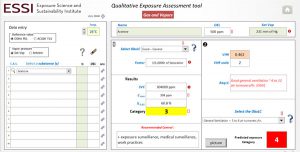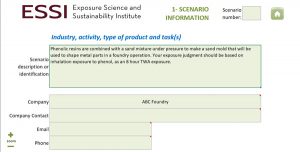We have compiled a variety of resources on relevant exposure-related topics, including information useful to our neighbors in the community and to occupational health and safety professionals.
HAZARDS
COVID-19
Handwashing Videos
OTHER COMMUNITY RESOURCES
- Improving Ventilation in Your Home – Centers for Disease Control (CDC)
- Researchers created a test to determine which masks are the least effective (CNN)
- Yes, wearing masks helps. Here’s why… (MPR)
Reuse of PPE and Reusable PPE
- Assessment and Determination of Practical Considerations for Widescale Utilization of Elastometric Half-facepiece Respirators during a Pandemic or Outbreak. WorkSafeBC Report
- Reusable Elastomeric Respirators in Health Care: Considerations for Routine and Surge Use. Situation National Academies of Sciences, Engineering, and Medicine. 2019. Washington, DC: The National Academies Press. https://doi.org/10.17226/25275
- Approach to Prioritizing Respiratory Protection When Demand Exceeds Supplies During an Influenza Pandemic: A Call to Action. Health Security. Volume 17, Number 2, 2019 ª Mary Ann Liebert, Inc. DOI: 10.1089/hs.2019.0027
- A cluster randomized trial of cloth masks compared with medical masks in healthcare workers BMJ Open 2015;5: e006577. doi:10.1136/bmjopen-2014-006577
- Performance Comparison of N95 and P100 Filtering Facepiece Respirators with Presence of Artificial Leakage, Annals of Work Exposures and Health, 2020, Vol. 64, No. 2, 202–216
- Effects of Ultraviolet Germicidal Irradiation (UVGI) on N95 Respirator Filtration Performance and Structural Integrity, Journal of Occupational and Environmental Hygiene, 12:8, 509-517, DOI: 10.1080/15459624.2015.1018518
- Impact of Three Biological Decontamination Methods on Filtering Facepiece Respirator Fit, Odor, Comfort, and Donning Ease, Journal of Occupational and Environmental Hygiene, 8:7, 426-436, DOI: c
Understanding Transmission
Building Ventilation and Safe Reopening Best Practices
Technical Guidance Documents
- Disinfection of Filtering Facepiece Respirators
3M - COVID N95 Decon & Reuse: Hydrogen Peroxide Vapor and Hydrogen Peroxide Gas Plasma
N95Decon.org - COVID N95 Decon & Reuse: Heat and Humidity
N95Decon.org - COVID N95 Decon & Reuse: UV-C
N95Decon.org - Technical Report for UV-C-Based N95 Reuse Risk Management
N95Decon - Technical Report for H2O2-Based N95 Reuse Risk Management
N95Decon - Decontamination and Reuse of N95 Respirators with Hydrogen Peroxide Vapor to Address Worldwide Personal Protective Equipment Shortages During the SARS‐CoV‐2 (COVID‐19) Pandemic
HAZARDOUS DRUGS
We are currently compiling resources on this topic. Learn more about our research on exposures to hazardous drugs.
EXPOSURE ASSESSMENT TOOLS
MODELING
 Industrial hygienists (IHs) need objective methods for estimating occupational exposure when exposure monitoring data are unavailable. This tool, currently an Excel based spreadsheet has been shown to be very helpful in guiding professional judgment leading to more accurate exposure judgments. A web-based version that could be used on a smart phone or device would be very useful to practitioners. We are planning to develop this tool for implementation on several platforms.
Industrial hygienists (IHs) need objective methods for estimating occupational exposure when exposure monitoring data are unavailable. This tool, currently an Excel based spreadsheet has been shown to be very helpful in guiding professional judgment leading to more accurate exposure judgments. A web-based version that could be used on a smart phone or device would be very useful to practitioners. We are planning to develop this tool for implementation on several platforms.
⇒ DOWNLOAD TOOL
INSTRUCTIONAL VIDEOS
 This tool was developed to facilitate a complete and consistent approach to basic characterization. It serves to collect and organize information in formats typically needed for modeling exposures and applying statistical tools when exposure measurements are collected. The file can be renamed for document retention purposes.
This tool was developed to facilitate a complete and consistent approach to basic characterization. It serves to collect and organize information in formats typically needed for modeling exposures and applying statistical tools when exposure measurements are collected. The file can be renamed for document retention purposes.
⇒ DOWNLOAD TOOL
 The IHMOD 2.0 and support file provide a range of mathematical models that are useful for estimating airborne exposure to chemical contaminants. These freely available spreadsheet tools are described at ihmod.org and the models have been evaluated by our team.
The IHMOD 2.0 and support file provide a range of mathematical models that are useful for estimating airborne exposure to chemical contaminants. These freely available spreadsheet tools are described at ihmod.org and the models have been evaluated by our team.
Learn more at: https://ihmod.org
⇒ DOWNLOAD TOOL
SUPPORT FILE
RELATED PUBLICATIONS
- Arnold SF, Shao Y, Ramachandran G. “Evaluating well-mixed room and near-field-far-field model performance under highly controlled conditions”. J Occup Environ Hyg. 2017 Jun;14(6):427-437. PubMed PMID: 28475481.
- Arnold SF, Ramachandran G, Shao Y. “Evaluation of Fundamental Exposure Models in Occupational Settings”. Journal of Occupational and Environmental Hygiene. JOEH; 2017. DOI: 10.1080/15459624.2017.1321843.
- Yuan Shao, Sandhya Ramachandran, Susan Arnold and Gurumurthy Ramachandran.
“Turbulent Eddy Diffusion Models in Exposure Assessment – Determination of the Eddy Diffusion Coefficient”. Journal of Occupational and Environmental Hygiene (2016) Vol. 14 (3) pp 195 – 206. DOI: 10.1080/15459624.2016.1238476
